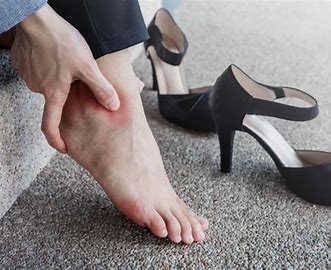+918048128529

This is your website preview.
Currently it only shows your basic business info. Start adding relevant business details such as description, images and products or services to gain your customers attention by using Boost 360 android app / iOS App / web portal.
Title: Understanding and Managing Heel Pain: A Com...

Title: Understanding and Managing Heel Pain: A Comprehensive Guide Introduction: Heel pain is a prevalent foot ailment that can manifest under the heel or just behind it. Plantar fasciitis, characterized by pain under the heel, and Achilles tendinitis, marked by pain behind the heel, are the two primary culprits. This discomfort can also affect the inner or outer side of the heel and foot. Although typically not injury-induced, heel pain, initially mild, can escalate to severe levels, potentially becoming disabling. While often self-limiting, persistent cases can evolve into chronic conditions. Understanding the Anatomy: The plantar fascia, a robust ligament extending from the heel to the toe, serves as an extension of the calf muscle. The condition is frequently observed in individuals with flat feet or a high arch. Impact on the plantar fascia during activities stretches its soft tissue fibers, leading to inflammation and subsequent pain under the foot. This discomfort is often described as a pricking, sharp sensation on the inner aspect of the sole, especially prominent during the first few steps in the morning or after periods of inactivity. Diagnostic Measures: X-rays of the foot commonly reveal a calcaneal spur, previously thought to be the cause of plantar fasciitis but is now considered an effect. Notably, individuals with calcaneal spurs may not experience heel pain. Ultrasound examinations can unveil tears in the plantar fascia, aiding in accurate diagnosis. Treatment Approaches: 1. Medications: Over-the-counter painkillers are effective in managing acute cases. 2. Cold Therapy: Applying ice packs helps alleviate inflammation and provides relief. 3. Shoe Insoles: Supportive insoles can contribute to improved foot mechanics, reducing strain on the plantar fascia. 4. Platelet-Rich Plasma (PRP): For chronic cases, PRP treatment has shown promising results in promoting healing. 5. Ultrasound-Guided Dry Needling: Precise needling of calf and foot muscles under ultrasound guidance can be beneficial in relieving tension. 6. Steroid Injections: Exercise caution with steroid injections, as direct administration into the plantar fascia may risk rupture, potentially necessitating surgery. 7. Physiotherapy: Engaging in targeted exercises prescribed by a physiotherapist aid in strengthening muscles and improving flexibility. Conclusion: Heel pain, often stemming from conditions like plantar fasciitis or Achilles tendinitis, can significantly impact one's daily life. Early intervention with conservative measures such as medication, cold therapy, and supportive insoles can be highly effective. In chronic cases, advanced treatments like PRP and ultrasound-guided dry needling offer promising outcomes, though caution is advised with steroid injections. Coupled with physiotherapy exercises, a comprehensive approach ensures optimal management of heel pain, facilitating a return to pain-free mobility. Dr Priya Rathi

